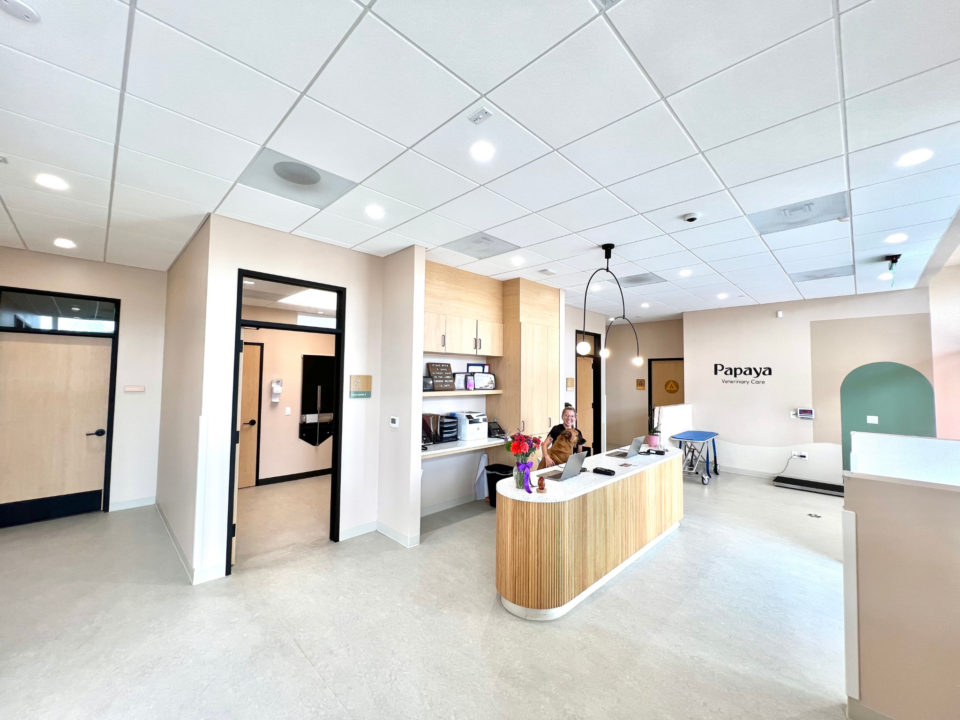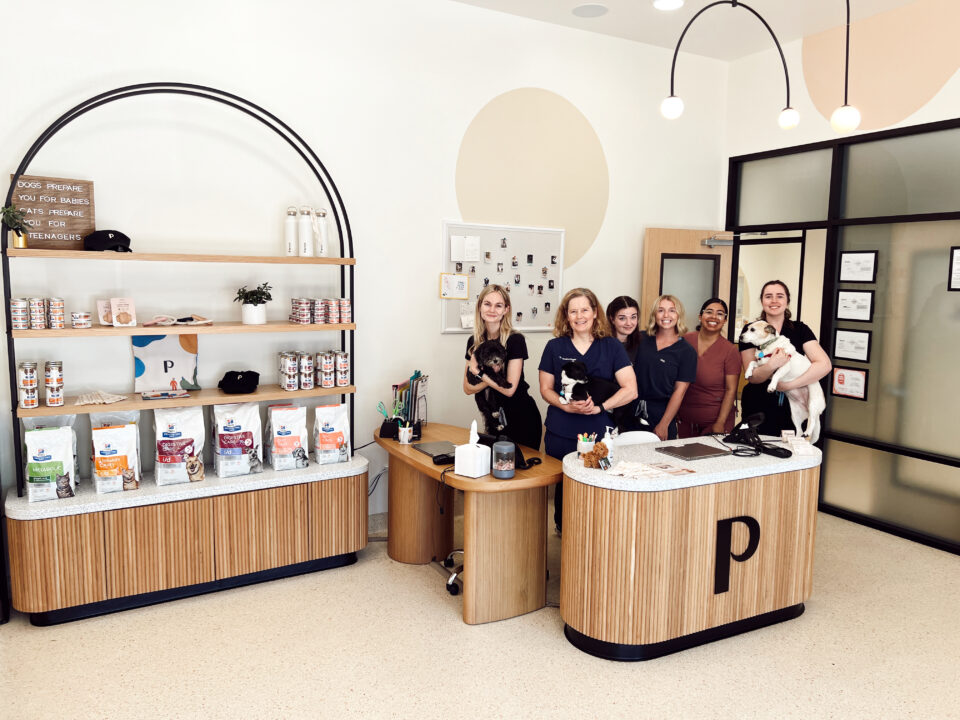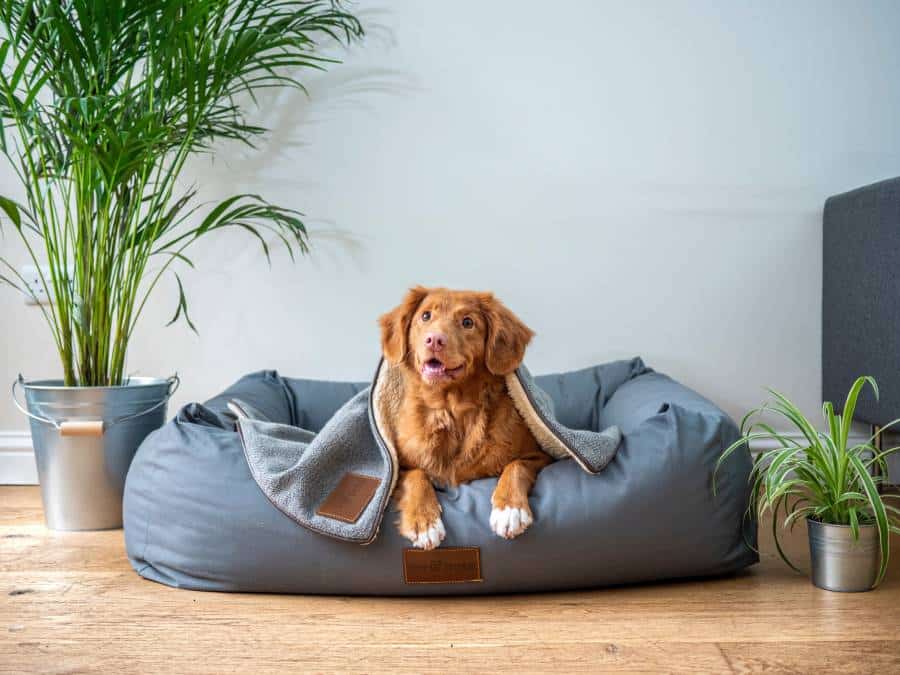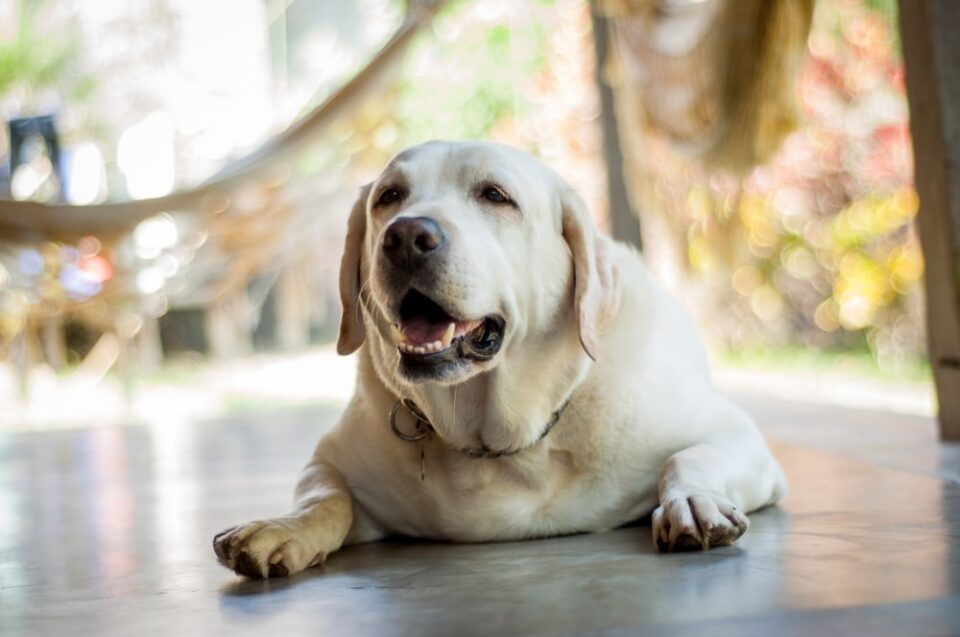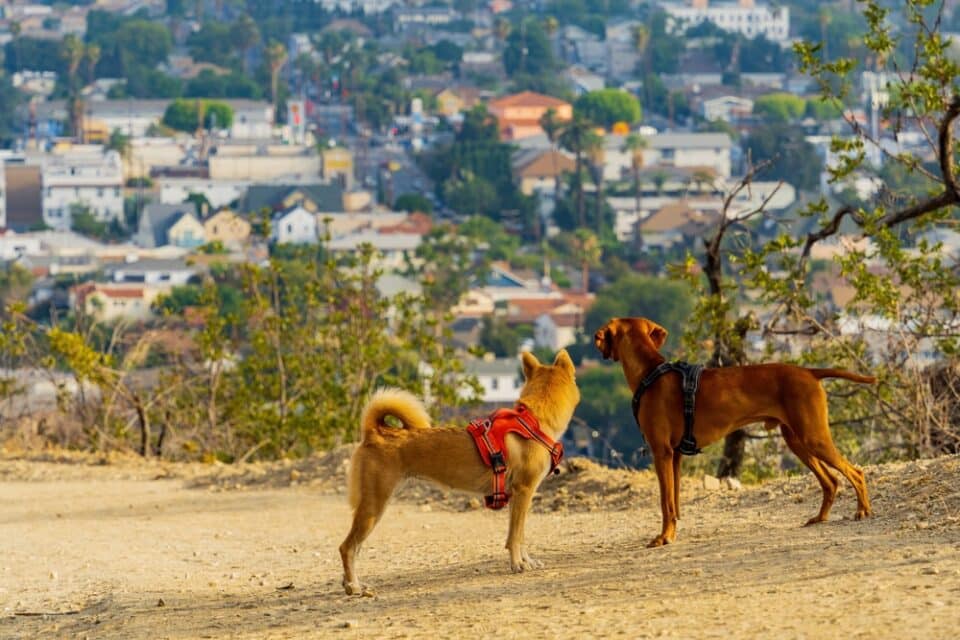Pet Care
8 min read
Potential Complications After Your Dog’s C-Section
Published on Jul 5, 2023

No matter how you do it, giving birth is quite the affair—and that goes for dogs, too. That is especially true when your dog has a Cesarean delivery (AKA c-section), a surgical procedure for removing puppies from the uterus. Like any surgery, c-sections can come with complications.
Potential complications after dog c-section procedures include hemorrhage (bleeding), dehiscence (reopening of the wound), and infection. In most cases, these post-op complications are manageable—if they even show up at all.
Generally, canine c-sections are safe and effective, and you have little to worry about as a pet parent. Still, it’s always best to be informed (especially regarding your pet’s health). With that in mind, we’re taking you through everything you need to know in the days and weeks following your dog’s cesarean section, including information on any possible complications and birth injury for the puppies.
What to Expect in the First 24 Hours
The first day after your dog’s c-section will likely be a whirlwind of emotions, educational pamphlets, and fur. Your dog, her new puppies, and you will probably be equally tired from all the excitement.
But as tempting as it might be to flop down on the couch and sleep the day away, after all the routine exams, the first 24 hours post-op are when your dog needs you the most. Now is the time to pay close attention, monitoring your dog’s condition for potential signs of complications.
Here’s what you can expect from your dog when you first come home from the clinic:
Exhaustion and Grogginess
As you can imagine, carrying around a pack of puppies for two months is no easy feat. And when that pregnancy ends with general anesthesia and surgery, it’s no wonder your dog is doggone tired after a cesarean section.
Some of that exhaustion is natural, but some come from the anesthesia used during the procedure. The anesthesia should leave your dog’s system in two to six hours, though the exact time will depend on factors including:
- Your dog’s age
- Your dog’s physical condition
- The type of anesthetic used
- The duration of labor pre-surgery
As the anesthesia wears off, your dog may seem wobbly and disoriented. Watch your dog closely, as she could fall and injure herself. Be especially eagle-eyed when she’s around her puppies, as her weight could easily squash a newborn.
If this grogginess persists, consider calling your veterinarian.
Stress and Anxiety
Ideally, your dog will have received enough medication before, during, and after her surgery to make it a hazy, distant memory. Still, the whole experience can leave her feeling on edge.
Immediately after you return from the clinic, give your dog plenty of time and space to settle in at home. If she has a favorite toy or blanket, she’ll probably appreciate having it close.
Vomiting (If Too Much Food or Water is Given)
A few hours after surgery, your dog may be interested in food again. However, it’s vital to go slow when reintroducing food and water to your dog—she’s in no condition to scarf down a whole can of beef paté. If you give her too much water or food shortly after her surgery, she may vomit it back up.
To avoid cleaning up another mess, offer your dog small servings of food and water every 30 minutes or so. Do this for 24 hours post-surgery, and you shouldn’t see any tummy troubles.
Your veterinarian may provide you with special food or dietary restrictions immediately following your dog’s surgery, especially if there are any complications that arise. If this isn’t your dog’s first c-section, knowing how many c-sections can a dog have and the total cost might also help you prepare.
What to Expect After One Week
After the first 24 hours, you can rest a little easier. Provided no signs of infection or excessive bleeding appeared overnight, your dog is well on her way to making a full recovery.
But even as her first week of motherhood plays out, your dog won’t feel quite like herself. Don’t worry—that’s perfectly normal. Other typical things you should expect to see during the first week include:
A Slight Increase in Temperature
You can use a rectal thermometer to take your dog’s temperature. The typical temperature range for a healthy dog is 100–102°F. However, in the 1–3 days following your dog’s c-section, you may notice a slight spike in her body temperature of 1–2 degrees.
This minor increase is normal. However, if your dog develops a fever over 104°F or if the temperature increase remains for several days, contact your veterinarian as soon as possible. An elevated temperature could signal that your dog has an infection.
Blood in Your Dog’s Urine and Discharge
In the first few days after surgery, you may notice a reddish tinge to your dog’s urine and vaginal discharge. A small amount of blood in these fluids is natural—after all, she did just give birth and have surgery on the same day.
Your dog’s urine should be blood-free after a few days, while any red-tinged discharge should stop after 3–7 days.
If you’re still finding blood after these timelines have passed, you may want to give your veterinarian a ring. Additionally, if your dog ever strains to pee, appears to be in pain when urinating, or refuses to go all together, a trip to the nearest animal clinic may be in order.
Increased Appetite
By now, your newborn puppies should be enjoying their mother’s milk (under your supervision, ideally, since the c-section wound may still be tender). Once your dog’s newborn puppies start nursing, your dog isn’t just eating to sustain herself—she’s feeding a whole family now. As such, her appetite will grow.
In the first week, you’ll generally want to feed your dog one-and-a-half times as much as usual. (As you enter the third and fourth weeks, your dog may need to eat twice as much as before.)
Eating more at this point isn’t enough; your dog should also have better-quality food. Ideally, you should have food meant for dogs that are nursing puppies. Your veterinarian can point you in the right direction if you’re unsure of what to feed your dog.
What to Expect After Two Weeks
As the second-week rolls by, your dog should be nearing total recovery from her c-section. But it’s not quite smooth sailing yet. You’ll still have to make some adjustments to your pre-puppy routine.
Here’s what you’ll experience all the way into your second week as a pet grandparent:
Licking and Chewing at the Surgical Wound
When dogs have painful wounds, they naturally want to lick them. We humans may not understand this desire, but it’s there. And although canine saliva has minor antibacterial properties, licking a surgical wound is a no-no.
The more your dog licks and chews around the incision site, the more likely she is to irritate the area, contract an infection, or reopen her wound. To keep your dog from poking at her stitches for the two weeks after the dog surgery, you may want to invest in an Elizabethan collar (dog cone) or another wearable contraption.
Your pet’s healthcare provider will provide you with specific dog c-section wound care instructions, but here are some general pet care tips:
Keep the area clean and dry, using a clean cotton pad and water as needed
Do not apply creams or ointments unless directed by a veterinarian
Check regularly for swelling, redness, or pus
Quiet Time
We’re not suggesting that your house will be quiet after your dog’s c-section (remember, you’ll have a handful of new puppies to care for). Instead, your recently-pregnant dog should continue to rest for about two weeks after her procedure.
While you should encourage some movement, please don’t allow your dog to run or play while her wound is healing. Too much activity could cause her incision to reopen.
A Follow-Up Visit for Stitch Removal (Maybe)
At the 10–14 day mark from the surgery day, your dog is ready to have her stitches removed—if they’re the removable kind, that is.
If you can see the stitches or staples, you must go into the clinic to have them removed. However, if the sutures aren’t visible, they’re probably the internal absorbable type. In that case, no follow-up visit is needed—the stitches will disappear like magic.
When to Contact Your Veterinarian
Throughout the two weeks after your dog’s c-section (and beyond), you’ll want to keep an eye out for the potential complications that may arise for both the mom and the newborn puppies. Most of the above complications (temperature increases, bloody urine, and grogginess) are completely ordinary.
However, if you notice any of the following, you should connect with your veterinarian as soon as possible:
- Hemorrhage (severe bleeding) – Bleeding complications can occur inside or outside the body after a c-section. Be on the lookout for blood around the wound, on other parts of the body, or in your dog’s bodily fluids.
- Infection – Some possible signs of infection include redness or swelling around the wound, an unusual odor, fever, or abnormally-colored discharge.
- Dehiscence (reopening of the incision) – Dehiscence, which is also called wound breakdown, happens when a wound reopens. Physical activity and licking can cause wound breakdown, as an infection. If dehiscence occurs, you’ll notice additional blood or drainage at the site of the wound.
Find Post-Surgery Peace of Mind with Papaya Veterinary Care
Overall, complications after dog c-section surgery are relatively rare, but they can happen. Thankfully, most complications are 100% treatable—as long as you have a trustworthy veterinarian on your side.
This feels like the perfect time to introduce ourselves. So, hi! We’re Papaya Pet Veterinary Care, and we specialize in providing you We do everything we can to make every appointment and surgery as straightforward as possible (for all the animals and people involved). If we need to perform a c-section on your dog, we’ll ensure you have all the information and supplies you need to make at-home care as simple as possible.
Should any complications arise, we’re here to help—even if you need a virtual visit to ask any burning questions. For everything else, we’re always a quick email away.
Sources:
VCA Animal Hospitals. Caesarean Sections in Dogs – Post-Operative Instructions. https://vcacanada.com/know-your-pet/caesarean-sections-in-dogs-post-operative-instructions
American Kennel Club. Should Dogs Lick Wounds To Heal Them? https://www.akc.org/expert-advice/health/should-dogs-lick-wounds/
American Kennel Club. Tips for Planning Your Bitch’s C-Section. https://www.akc.org/expert-advice/dog-breeding/planning-your-bitchs-c-section/
National Library of Medicine. Wound Dehiscence. https://www.ncbi.nlm.nih.gov/books/NBK551712

